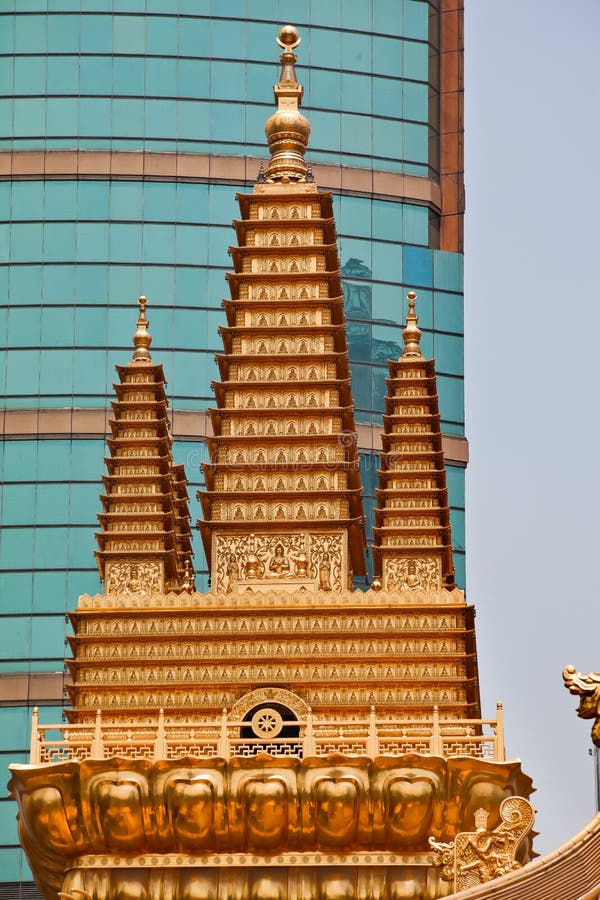

In the temple there is also another Recumbent Buddha which is four meters long and was brought from Singapore by the tenth abbot of the temple in 1989. The sedate face shows the peaceful mood of Sakyamuni when he left this world. The Recumbent Buddha is 96 centimeters long, lying on the right side with the right hand supporting the head and the left hand placing on the left leg, this shape is called the 'lucky repose'. The Sitting Buddha is 190 centimeters high and encrusted by the agate and the emerald, portraying the Buddha at the moment of his meditation and enlightenment. The sparkling and crystal-clear white jade gives the Buddhas the beauty of sanctity and make them more vivid. Both the Sitting Buddha and the Recumbent Buddha are carved with whole white jade. The two precious jade Buddhist statues are not only rare cultural relics but also porcelain artworks. Fortunately the statues were saved and a new temple was built on the present site in 1928. The temple was destroyed during the revolution that overthrew the Qing Dynasty. In 1882, an old temple was built to keep two jade Buddha statues which had been brought from Burma by a monk named Huigen. In the western part of Shanghai, a very modern and flourishing city, there is a venerable and famous Buddhist temple, Jade Buddha Temple. In 1983, the Shanghai Buddhist Association used the temple as the headquarters of The Shanghai Institute of Buddhism.Ģ018 China: Shanghai - Jade Buddha Temple In the 1960's, during the Chinese Cultural Revolution, the temple faced difficult times and the monks had to make a living by selling handicrafts. The construction took ten years, and completed in 1928.


The temple, as well as the jade statues, were moved to a new location.Ī few years later, in 1918, a Buddhist monk by the name of Kechen later had a new temple built on land donated by a member of the Qing imperial court, Sheng Xuanhuai. In 1911, during the Chinese Revolution, the original temple was occupied and damaged by the rebels. Shortly after the construction of the temple, the Buddhist monk passed away. Here, Huigen had a temple built in 1882 with donated funds, where he placed the two jade Buddha statues. While there, Chen Jun-Pu, an overseas Chinese resident in Myanmar, donated five jade Buddha statues to Huigen, who transported two of them back to Shanghai. He visited Myanmar (also known as Burma) after leaving Tibet. During the reign of the Guangxu Emperor (1871–1908) in the Qing dynasty, Huigen, a Buddhist monk, went on a pilgrimage to Tibet.


 0 kommentar(er)
0 kommentar(er)
